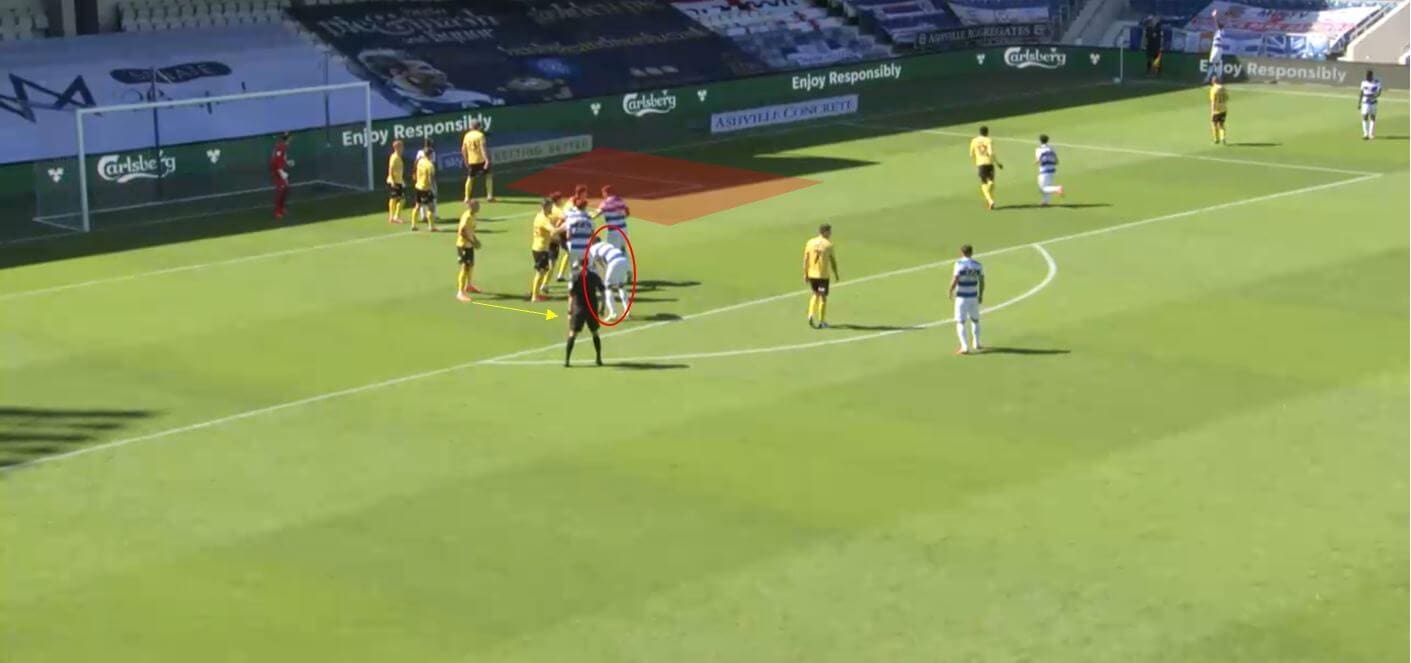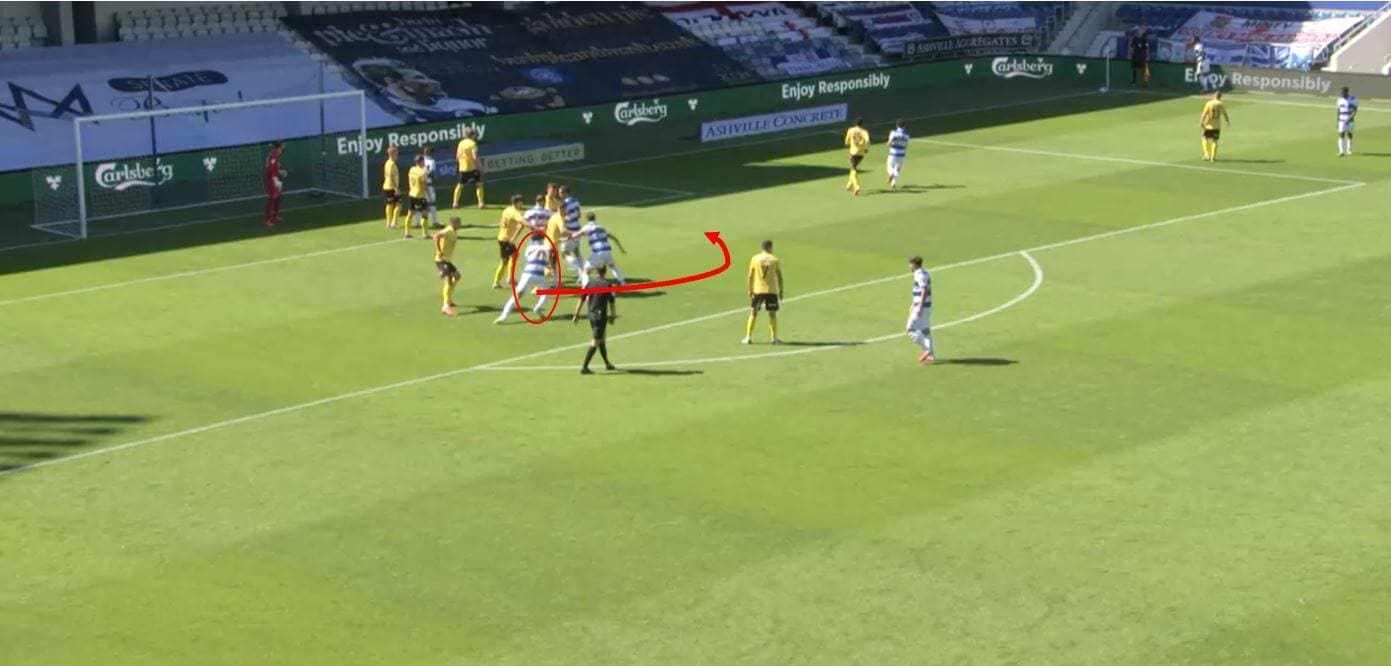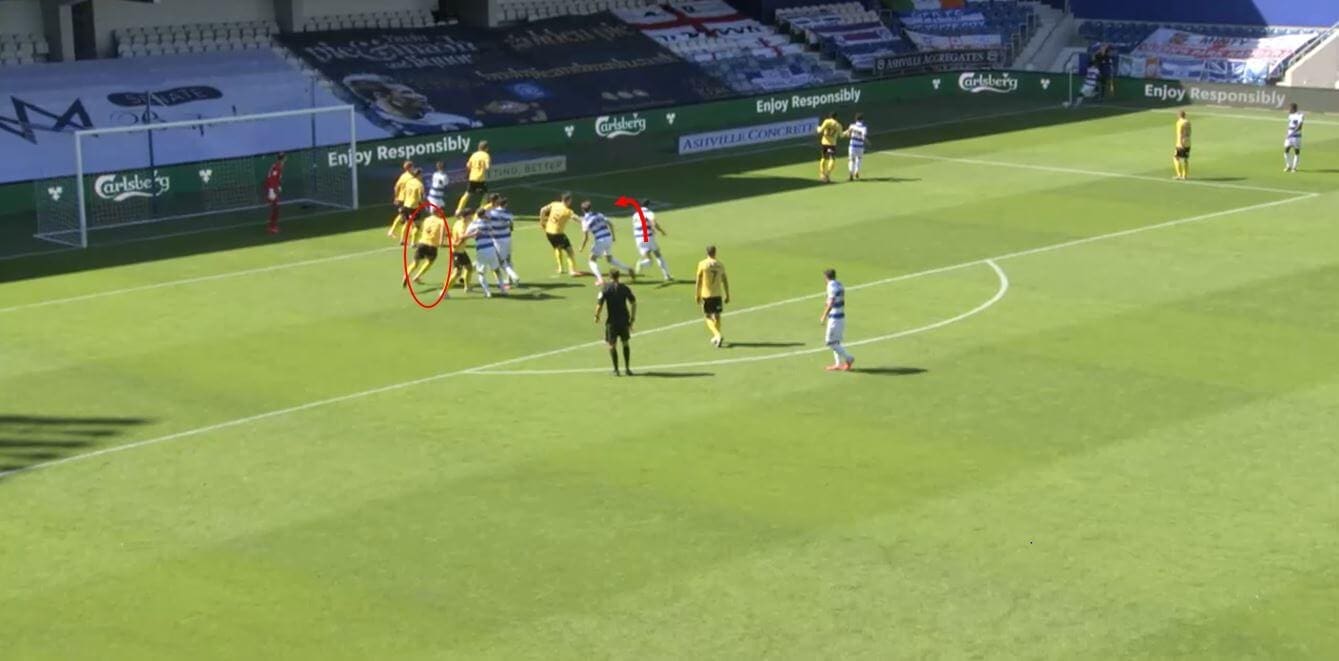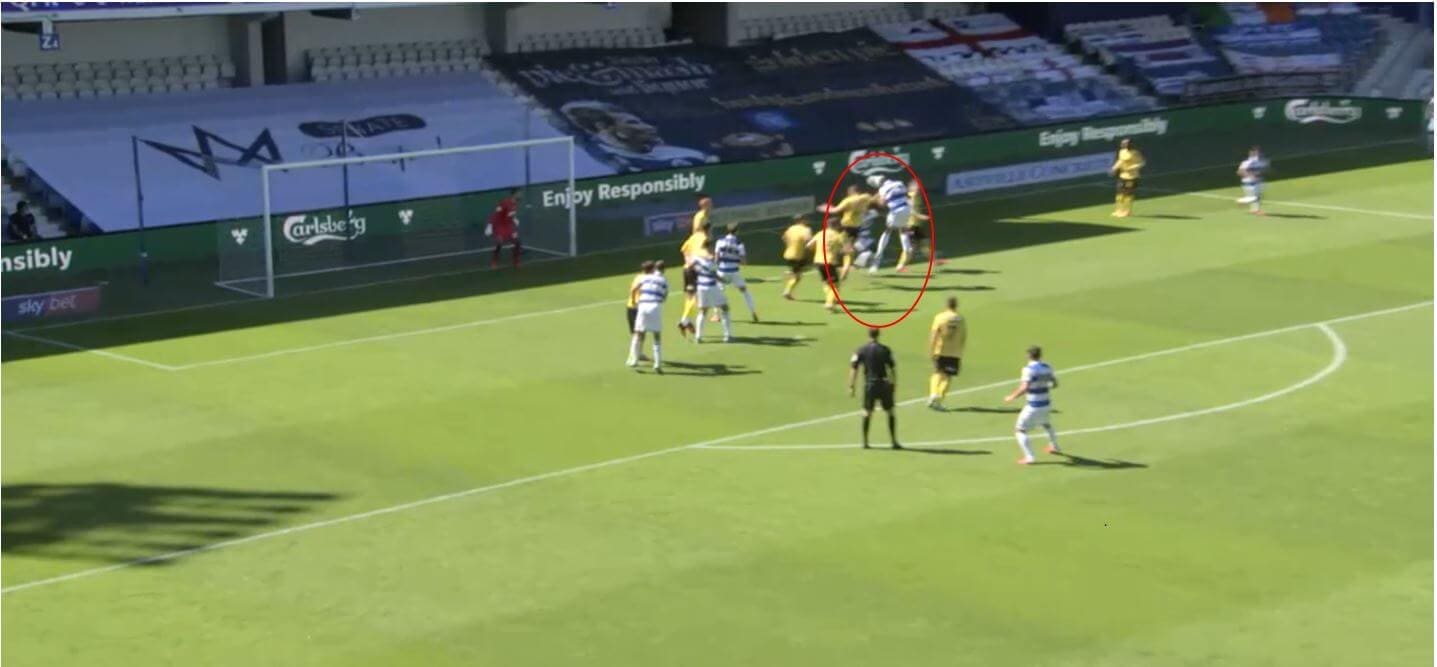This week’s set-piece analysis example comes from the Championship, with a QPR goal against Millwall in their 4-3 win. This example is a very good example of excellent movement and a complementary attacking structure.
We can see QPR set up with one player closer to goal while a group of four players stay at the edge of the box. Three of those four remain in a compact shape, while one player sits deeper. This deeper player acts as the target man. Having a player closer to goal forces the opposition to sit quite deep, while the deeper positioning of the four QPR players creates a space between the two lines. Millwall’s structure naturally leaves space in the higher near post zone.
The target player starts deep and looks fairly disinterested, and this creates separation between him and his marker in front, who won’t get too tight to his marker.

The target player springs into action, and makes a movement around the cluster in front of him towards the near post. This target player therefore runs into the direction of the block, and because of his initial deep positioning, his marker cannot follow him directly.
The initial cluster of players are also all on the near side of their markers, and so in a compact shape can effectively act as a shield for this run outside the cluster, as none of the other Millwall markers can push out to close this space.

Because the target player runs in the direction of the cluster, his marker can’t follow and has to find another route. He instead has to run around the cluster in the other direction. This obviously adds time to his run and creates massive separation between the pair, and with an excellent delivery into the exact zone needed, QPR could find success.
The closest player remains active and changes direction often, which helps to keep his marker’s attention on him.

The delivery is excellent and the target player’s marker gets to his marker just as he has headed it, and so that separation and delay created by the cluster has been effective. The header is saved well by the goalkeeper and QPR score the rebound. They require some luck with the rebound, but everything before that is excellent.






Comments